From experiment to status quo
We’re two years into the greatest work experiment of all time. What began as a necessary shift to remote work
has evolved into a long-term exploration of hybrid ways of working. Around the world, organizations have been
implementing emerging technologies, innovative leadership strategies, and new workspaces, all with the goal of
finding a better way of working fit for a highly digital, globalized world. Together, we’ve had the opportunity
to completely reinvent how, when, and where we work.
The March 2020 shift to remote working supercharged the digital transition already underway in many
organizations. Because of this, most of the work we do has moved almost entirely onto virtual platforms,
allowing us to collaborate with one another no matter where we are. It’s also enabled colleagues to remain
connected to one another even through the toughest of times.
Mapping hybrid’s uncharted territory
Now, we’re entering the next stage in this hybrid working journey. Employees around the world are experiencing a
wholesale evolution in their work identities and the emotional connections they have to colleagues, workspaces,
and to work itself. They’re beginning to embark on new journeys – many exploring new jobs and industries
altogether – and they’re finding novel ways to organize work around their life.
But with these major changes come new challenges for organizations, leaders, and employees. With two years of
constant adaptation to extraordinary societal circumstances, employees are still experiencing a great deal of
uncertainty when it comes to their work arrangement; just as they return to the office, they’re sent back to
work from home. For some, a return to the home office comes as a welcome relief, while to others it’s a major
disappointment. But for the vast majority, the constant uncertainty is beginning to take its toll.
Building a better future
As we enter the third year of this new era of work, we must begin to think about hybrid work differently. We
need to start thinking about how to create emotional stability in an otherwise consistently unstable reality.
To better understand how to move forward with hybrid work, we surveyed 2,800 knowledge workers in six key
countries to answer three critical questions: How much autonomy should employees have to determine where and
when they work? What characterizes our emotional connection to our workspaces? And how can we use technology to
rewire our relationships with colleagues for a virtual-first era?
Download the full report
Jabra hybrid Ways of working: 2022 Global Report
The insights
Maximizing employee autonomy for a better hybrid work experience
Employee autonomy has long been of interest to management and HR professionals. At its core, the goal of
promoting autonomy is to empower employees to truly take ownership of the work they do and to work in a way that
allows them to do their job most effectively. After all, it’s employees who are most familiar with their work
and how they can do it best, whether that means deciding which tasks to prioritize or in which order to complete
them. And with hybrid work becoming more common, employees are increasingly able to decide for themselves where
and when they should do their work.
In this section, we explore how autonomy impacts employees’ work experiences, as well as how leaders can most
effectively implement a hybrid work model that empowers employees with more freedom to determine their own work
arrangement.
01
Employees with full autonomy to choose where they work are happier with their jobs.
In our survey, we asked all employees to choose one of five possible options that best described their current
work arrangement. Then, we asked them to rate how that work arrangement impacted various aspects of their job.
The goal was to create a direct link between the amount of autonomy an employee is given and their overall
experience at work. To convert these into a simpler framework, we’ve classified these work arrangements
according to the degree of autonomy they give the worker to determine how their own work week is arranged.
We found that as autonomy increased, so too did the likelihood that an employee would feel their work
arrangement had a positive impact on their overall work experience. Workers with full control over their work
arrangement unanimously reported a better work experience – sometimes with notable differences – than those with
limited or no say in where and when they worked. These differences are most apparent when it comes to feeling a
sense of belonging, productivity, trust in leaders, work-life balance, and mental well-being.
Interestingly, there was almost no difference across all three groups when asked whether their work arrangement
had a positive effect on the impact they felt they had in their organization. Impact is a matter of receiving
recognition for a job well done and understanding how those results affect the wider goals of the organization.
As such, where and when we work may not have as direct an effect on our sense of impact as do other practical
considerations such as reward and praise.
Key Takeaways
The trust experiment of the century is playing out before our eyes and autonomy is going to pay a key role;
it’ll be an essential part of improving employees’ satisfaction and engagement at work. Increased, autonomy will
positively impact their sense of belonging, motivation, productivity, trust, work-life balance, and mental
well-being. Decreased, it’ll begin to erode these foundational pillars of organizational culture and success.
When weighing the viability of various work arrangements moving forward, autonomy should be the first variable
leaders consider. By giving employees the ability to choose where they work, then planning space and technology
needs accordingly, leaders can create a world-class work experience that will translate to broader
organizational success.
02
Autonomy doesn't mean unpredictability. Leaders can still plan for real estate and tech needs.
If there’s been one benefit from the constant location changes of the past two years, it’s that employees have
been able to experience the advantages of having access to multiple kinds of workspaces. And because of this,
employees with full autonomy are very likely to choose to work in a hybrid working model as their normal working
arrangement. With a hybrid model, they know they’ll be able to access spaces that are conducive to
socialization, collaboration, and focus, while also having the ability to balance work and life in a way that
makes most sense to them.
Empowering people with the autonomy to optimize their time and tasks as they see fit is absolutely essential
to building an equitable company culture. As such, forcing everyone to work in the same way – that is, to work
in the same place from 9 to 5 – will inherently alienate any employees who can’t balance their lives with that
outdated and narrow conception of work.”
Kelly Nagel,
President of North America, Jabra
When we looked at the current workweek of fully autonomous employees, we found that 57% of them choose to work a
hybrid week. This is more than double those who choose to work fully remote and more than triple those who
choose to work fully in-office. Hybrid is the clear front-runner for employees when they aren’t mandated to work
in any specific way.
Key Takeaways
When it comes to settling on a work arrangement for your organization, handing the decision-making over to
employees doesn’t automatically mean that leaders won’t be able to predict their behavior to plan space and
technology needs accordingly. For months, leaders have been concerned with social aspects of hybrid work, such
as how to maintain company culture and maximize informal interactions between colleagues. However, the data
shows that if you let people decide, they generally opt in favor of a balance that services these needs
automatically. In other words, they generally opt for hybrid work.
In addition to this, by creating a virtual-first work culture in which the work we do is independent of
location, organizations open up the possibility of hiring fully remote talent. Around the world, the so-called
“Great Resignation” has been a rude awakening to many organizations. By expanding the pool of eligible
candidates beyond a commute radius of a physical location, organizations create major opportunities to hire the
best of the best.
Identifying the emotional significance of our workspaces
Places have meaning and symbolism. Up until the pandemic, the emotional connection we had with our workspace may
not have been something we gave much thought; it was simply somewhere we sat while getting our work done. But
when employees were sent to work from home, many were cut off from the feeling of belonging that their in-office
workspace provided. They were separated from that sense of regularity and predictability that a specific place
offered them.
In response, employees all over the world were inspired to create that connection for themselves by setting up a
more dedicated home workspace. In fact, since the pandemic, 42% of employees have reconfigured their home
workspace to better fit their needs. These reconfigurations allowed workers to recreate that connection to a
dedicated workspace that so many of them had in the office prior to the pandemic.
While employees were busy setting up a dedicated workspace at home, 49% of respondents say their organization
had been reconfiguring their office space to create new meeting rooms, restructure desk clusters, and update
lounge spaces. They’ve also been considering the best way to implement hot desking arrangements in order to
optimize space and give employees a dynamic workspace to return to. These changes were in many cases meant to
reflect the new realities of the hybrid world we live in: lower daily headcount, more diverse space needs, and
concerns over health and safety in the office.
It turns out, however, that the return to the office was not as smooth and clearly defined as many had
anticipated. We tried returning to the office on set days, only to find out that people want to manage their own
schedule. We tried hot desking, only to see employees sit at the same desk every day anyways. In many places
around the world, workers have been floating between these multiple workspaces not out of choice, but out of
necessity. Right as they begin to re-establish that connection to their workspace, they’re cut off from it by a
change in guidelines regarding where to work. For a large portion of workers, this constant back and forth has
left them without a sense of “place” in their work.
So, what do we need to do to restore – or rather, recreate – a more permanent sense of connection with our
workspaces? How do we once again feel that we belong somewhere?
01
Understand the hidden attachment your employees have to the office before reconfiguring it.
Your employees might not be returning to the office anytime soon, but they’ve still created a strong
association between the office and their sense of belonging in the organization. Across all types of workers,
there’s still a desire to have a dedicated personal space in the office. In fact, almost 7 in 10 workers agree
that if they didn’t have a regular, permanent workspace in the office, they would still try to sit and work in
the same spot every day. As humans, we’re drawn to consistent and predictable routines, and workers really want
to know what their day is going to look like should they choose to go into the office.

The data also shows that not having a regular, permanent working space could be detrimental to employee
engagement, motivation, and even retention. With almost 4 in 10 workers saying that they’d feel less loyalty and
commitment to their company if they didn’t have a regular, permanent workspace, this brings into the spotlight
the possible unintended consequences of hot-desking arrangements in the office. Much of the guidance around hot
desking addresses practical considerations, such as the number of desks necessary or whether employees should
have individual lockers where they can leave their belongings. But as we see here, the emotional reaction to
losing your dedicated space could outweigh many or all of these logistical concerns.
Key Takeaways
Leaders who wish to implement a hot-desking setup will need to think carefully about how to replace this sense
of belonging with one that is more location-agnostic. A first step in this direction is to build a
“virtual-first” approach to work and culture, wherein physical locations have a role but are secondary to
effective virtual connection. If everyone knows that they can contribute on an equal playing field regardless of
where they are, they’ll be able to create a physical space that responds to their needs while still feeling a
sense of belonging within the team and the organization.
02
The office you haven’t considered is becoming increasingly popular with hybrid natives.
Gen Z represents a generation not only of digital natives, but also of hybrid natives. To a large extent, these
young employees were only beginning their careers as the pandemic struck. Because of this, almost the entirety
of their professional experience thus far has been characterized by constant movement from one workspace to
another. In short, the “anywhere office” is all they’ve ever known.
Entering a workforce where remote and hybrid work are commonplace has had a major impact on how these hybrid
natives perceive the importance of location in work. So much so, in fact, that 10% of Gen Z report that their
usual workspace is a third space (e.g., co-working space, café, library, etc.) rather than their home or
traditional office. That’s twice as much as Millennials and roughly three times as much as Gen X and Boomers. In
addition to this, 64% of Gen Z says that they consider their “office” to be their laptop, headset, and wherever
they can get a strong internet connection.
Key Takeaways
As we’ve already seen, the connection to regular, permanent, in-office workspaces is strong across the workforce
as a whole. But as Gen Z continues to take up a larger proportion of the workforce, this connection will
continue to fade away. Unlike their more experienced counterparts – particularly Gen X and Boomers – these
hybrid natives don’t have as strong of an association between work and place. For them, what’s more important is
that they can get their work done from wherever they happen to be, rather than to be wherever they have to get
their work done.
As leaders, we can’t expect that our Gen X and Gen Z employees will have the same motivations for coming to
work – or any two generations, for that matter. To create a work culture that reflects, respects, and embodies
the wide range of values in a five-generation workforce, it’s up to leaders to identify the shared values that
bridge these groups and use those as common ground on which to collaborate and cooperate.
Holger Reisinger,
SVP, Jabra
Because these employees have a less established connection to the office, leaders need to be more mindful of
bringing teams together more often to create stronger ties and relationships. It also has strong implications
for IT strategies and flexible working policies. In order to prepare for the shift to a predominantly Millennial
and Gen Z labor market, equipping teams with the right tools to work from the “anywhere office” will be crucial.
It will also be an important part of attracting and retaining young talent in a future increasingly dominated by
hybrid natives.
Enabling genuine human connection with hybrid technology
The future of work will be virtual-first. With hundreds of millions of people collaborating on Teams, Zoom, and
other unified communications (UC) platforms every day, these virtual environments are the new standard for how
we connect to one another. In fact, many employees have only ever met some of their colleagues on these
platforms. Because of this, it’s critical that leaders do all they can to get the most out our virtual
environments, so employees can create closer, more human relationships with their colleagues.
However, not all employees have the same experience in virtual meetings. In fact, 37% of employees globally say
they often feel left out of the conversation in hybrid meetings. UC platforms will not only be where hybrid and
remote workers meet to get work done; they’ll also be central to fully in-office teams, as meetings with
clients, customers, and other partners will often take place in a virtual or hybrid setting. As such,
inclusivity in the physical office or meeting room isn’t sufficient for the future. Organizations will need to
find ways to make sure that all their employees can connect inclusively and equitably in fully virtual and
hybrid environments. Being able to easily operate in a virtual setting will be essential in making sure
employees can maintain a sense of confidence and purpose in the hybrid working future.
01
Office workers are underequipped for the virtual era.
As we saw earlier, office workers are roughly (25%) less likely than hybrid or remote workers to report being
provided with the necessary technology to collaborate equitably and inclusively. More specifically, only 3 in 10
regularly use external audio and video devices for work. These differences in access to technology make
operating in virtual environments difficult for in-office workers. Below, we can see exactly how the
consequences of the lack of technology play out in virtual meetings. Specifically, in-office employees are 17%
more likely than remote workers – the most well-equipped group – to report difficulties with hearing what’s
being said. Similarly, in-office employees are 21% more likely to struggle with collaboration in virtual
environments. This shows that having the right technology in place truly does make the experience.
While in-office employees may be collaborating in-person with their colleagues more regularly, there’s still
going to be a strong need to collaborate virtually with external partners; strong relationship-building with
clients and customers is essential to business success. We know from our previous research that a fancy
headquarters is no longer going to do the trick. Instead, the technology you use to connect with others is going
to be your first impression, an indication of professionalism and a willingness to meet others where they’re at.
A lack of proper technology may make relationship-building in these virtual environments more tenuous and
difficult than it needs to be.
Key Takeaways
In the future, while some teams will collaborate in person more often than others, business more broadly will
still take place in virtual environments. Because of this, it’ll be essential for employees to be able to thrive
in virtual meetings regardless of whether they’re fully in-office, remote, or hybrid. To make this happen, IT
decision-makers need to not only equip meeting rooms with video conferencing technology that connects in-office
workers to remote and hybrid workers elsewhere, but also to provide individuals with the necessary personal
collaboration technology to be able to connect virtually with business partners.
02
Professional technology directly impacts meeting inclusivity for employees.
As we’ve seen above, not everyone feels included in virtual meetings to the same degree; in-office workers are
experiencing more difficulties than hybrid and remote workers. In response, and since the start of the pandemic,
there’s been a large focus on virtual meeting training to ensure that everyone can participate: leaving time at
the end of the meeting for discussion, using “hand raise” functions built into UC platforms, or encouraging
participants to use the meeting chat to pose questions. And while these are all effective methods to more
equally include everyone in the conversation, what if people simply can’t hear what’s being said in the first
place?
In our survey, we discovered clear links between the kind of audio technology used and employees’ meeting
experiences. There are many different kinds of audio devices, and they’re not all created with the same purpose
in mind. The built-in microphone in laptops, tablets, and mobile devices are there to serve our base audio
needs. Similarly, consumer audio devices, such as those that come with your mobile phone, are designed for music
and streaming purposes. However, professional audio devices are designed specifically to be used in professional
virtual environments, such as on UC platforms like Microsoft Teams and Zoom.
We found that those using only professional devices for work reported the least amount of issues in virtual
meetings on UC platforms. Most notably, they had less trouble hearing what’s being said than those using only
consumer devices, where almost 4 in 10 reported audio issues. Additionally, professional device users were 10%
less likely than consumer device users to report feeling left out of the conversation.
Key Takeaways
Virtual meeting inclusivity is difficult to achieve, and devices truly do make or break the meeting experience.
As such, for IT decision-makers, professional audio should be seen as a major enabler of a more seamless and
inclusive virtual meeting experience. As the way we work continues to trend towards virtual environments,
there’s an immediate need to equip all employees, regardless of location, with standardized professional audio
technology. Without the right tools, employees risk feeling left out, unheard, distracted, and unable to
collaborate effectively.



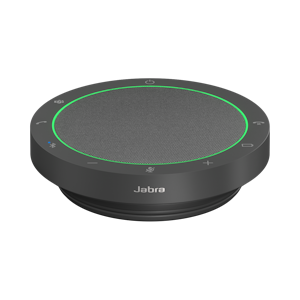

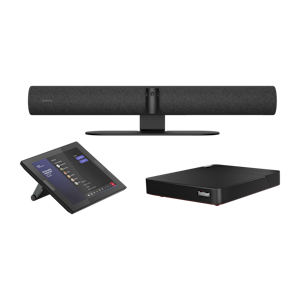




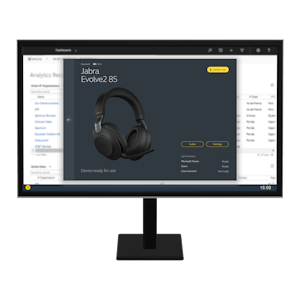
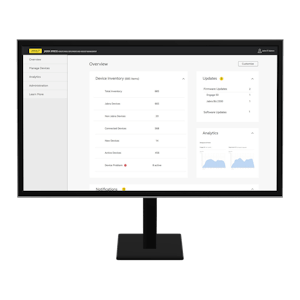
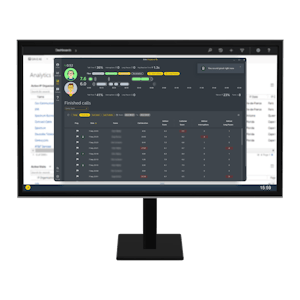

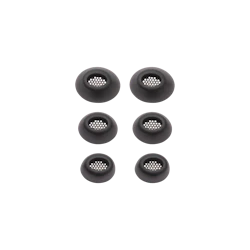
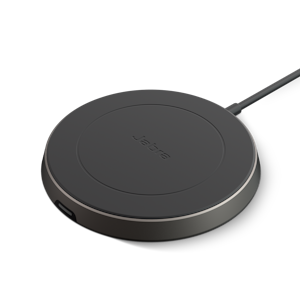

 Autonomy
Autonomy
 Workspaces
Workspaces
 Technology
Technology








